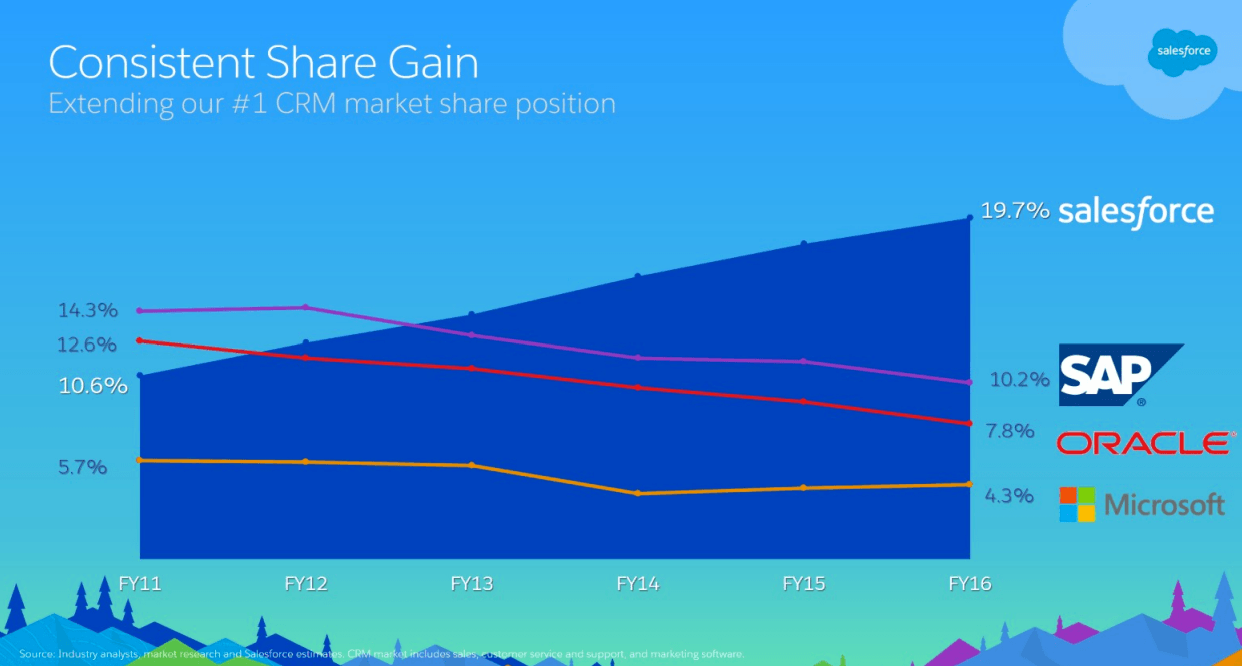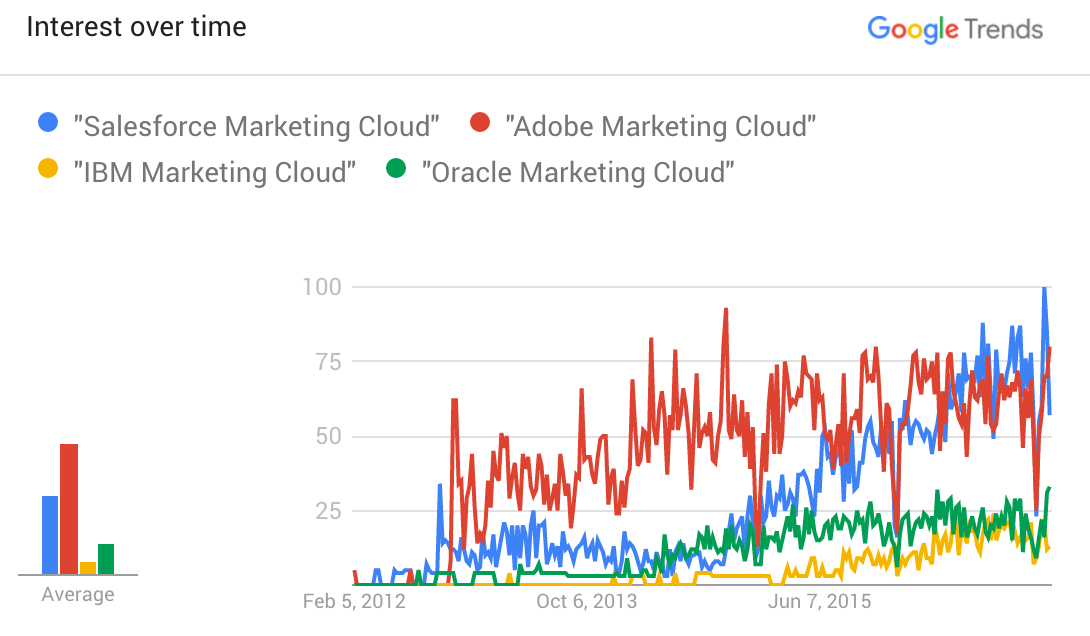Salesforce Sails Past Legacy Enterprise Software Competitors

Salesforce is winning because it was born in the cloud – while SAP, Microsoft, and Oracle are struggling to balance the transition from legacy cash cows to cloud-based software delivery.
Salesforce is a clear winner in the age of digital transformation. The business is one of the first enterprise software companies built on the cloud from the ground up, allowing it to leap ahead and become a market leader while legacy service providers are mired in the confusion of transitioning from a boxed software perpetual-license model to a software-as-a-service cloud-based model that is demanded by enterprise customers today.
The evidence of Salesforce’s dominance is clear – their consistent share gains have come at the expense of established rivals like Oracle, SAP and Microsoft.

How did they do it?
When Salesforce CEO and Chairman Marc Benioff founded Salesforce in 1999, the idea for his company had already been brewing for several years (Behind the Cloud: The Untold Story of How Salesforce Went from Idea to Billion-Dollar Company). Up to that point, a company buying enterprise software faced a multi-month process involving customization, CD-ROMs, lengthy install periods, and an arduous update process. Observing Amazon transforming the consumer space, Benioff knew there had to be a better way for business.
By building the first enterprise software business whose delivery method would be solely through the cloud, Benioff never had to balance the transition of slowly pedaling the breaks on the existing cash cow method and pumping the gas on a new cloud-based solution.
This innovative mindset has allowed the company to continue to win as the digital transformation has accelerated. As data has exploded, business leaders have become obsessed with measuring ROI and optimizing their sales and marketing efforts (http://www.mckinsey.com/business-functions/organization/our-insights/transformer-in-chief-the-new-chief-digital-officer). Early on, Salesforce recognized their dominance in CRM meant they were well equipped to help business leaders in this regard and used cloud updates of their software to added predictive analytics tools such as a sales forecaster. In this manner, CRM’s value creation was enhanced and their value capture increased as their established relationship with customers and continually improving product allowed them to retain customers without having to pay the expensive commissions paid out for new customer accounts. After all, growing your business with existing customers always is higher ROI than acquiring new customers.
Enterprise customers are now focused on a holy grail of the digital transformation for business, unified Sales and Marketing functions allowing for an end-to-end understanding of their entire revenue funnel from awareness at the top to transactions at the bottom. Given Salesforce’s nimble cloud-based offering, they decided to leverage their strength in Sales to connect to Marketing solutions for the cloud. In June 2013, the Company acquired Exact Target (renaming the brand Salesforce Marketing Cloud) to build out its Marketing software capability. Since the acquisition, the company has established a track-record of acquiring bolt-on businesses to the platform in order to create an increasingly robust digital hub solution.
The strength of these efforts can be seen from the awareness being gained by Salesforce in the marketplace – Google Trends data shown here demonstrates how Salesforce’s leading position in CRM software has translated into leading awareness on the Marketing Cloud side.

All these gains have come based on Benioff’s simple recognition that the digital transformation is allowing businesses to be more nimble and analytical than ever before. Having jumped out of the starting blocks earlier than competitors, Salesforce should continue to lengthen its lead over competitors for the foreseeable future.



Thanks so much for the post, Alex. I’m curious about Salesforce’s customer base. It would be interesting to learn if their customers are primarily young and/or more agile companies or if there’s a decent portion of traditional corporate companies as well. I would think that traditional corporate accounts would be extremely valuable (as a large, steady revenue stream), but because of their typically bureaucratic nature, they may be particularly hard to convert to a new platform. The Microsoft, Oracle, and SAP platforms may be very sticky for these customers and thus, these players maybe hard to acquire. Not being able to tap into this demographic could inhibit the company’s ability to continually gain marketshare. How is Salesforce attempting to tackling this challenge? Additionally, I wonder if any of the Salesforce customers also have a competitor’s CSM platform — perhaps the customer had the legacy platform and is using Salesforce to supplement it. Would Salesforce see this scenario as an opportunity or a threat?